“In addition to the failure to prove contagiousness of human poliomyelitis, it has likewise been impossible to prove contagiousness of poliomyelitis in experimental animals.”
– Ralph Scobey
While investigating the horrors of polio, I looked into the lack of evidence for any purified and isolated polio “virus” in a three part series (part 1, part 2, and part 3). I examined the cruel and grotesque animal experiments that were used to convince the public that a paralytic disease-causing “virus” had been found, including Simon Flexnor’s inhumane evidence derived from drilling holes into the heads of monkeys and injecting them with toxic soup. I covered John Franklin Ender’s polio research as well as the “discovery” of the “Lansing strain.” I dissected the Salk vaccine research, including exploring the dangers of the polio vaccine campaign. I questioned whether or not polio had actually been conquered as proclaimed by the mainstream media while delving into the magic tricks utilized to convince the public that the vaccines were effective at eliminating the disease. Thus, I thought that I had done a pretty thorough job of uncovering and displaying the hoax that is polio for everyone to see throughout these various articles. However, thanks to the excellent work of Aldhissla45 on Twitter, it is clear that I missed a big chunk of evidence against this “infectious” disease.
Aldhissla45 recently reached out to me with a great idea for another edition of the Infectious Myth Busted series, this time focused squarely on the lack of evidence showing human-to-human transmission of the disease known as polio. I was presented with a very comprehensive outline for the article, with plenty of enlightening research into the issue of “infectiousness” and “contagiousness” of the polio “virus.” While I added some of my own writing to the article with the permission of Aldhissla45, what is presented below follows the research and outline that was provided to me. I tried to leave as much of it as intact as possible. I am very grateful to Aldhissla45 for allowing me to share this research on the site. What you will see is a very convincing case against the supposed “infectious” and “contagious” nature of polio. So, without further ado, let’s dive right in!
Is Polio Contagious?
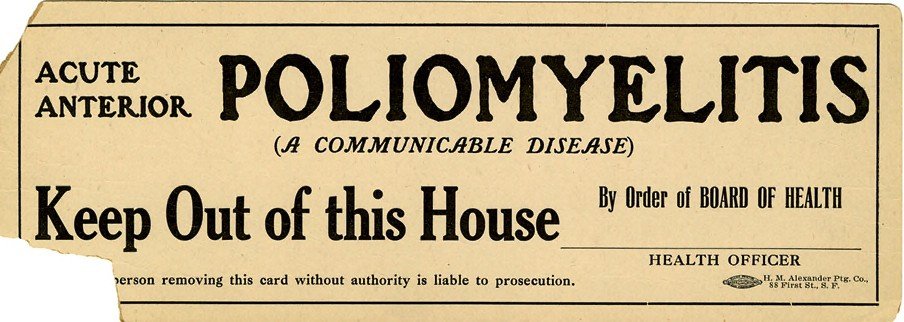
According to the CDC, polio is “very contagious,” and the “virus” can be spread before symptoms ever appear:
“Poliovirus is very contagious and spreads through person-to-person contact.”
“An infected person can spread the virus to others immediately before and up to 2 weeks after symptoms appear.”
https://www.cdc.gov/polio/what-is-polio/index.htm
The WHO states that polio is highly “infectious,” so much so that even if one child remains “infected,” children in all countries are at risk:
“Polio is a highly infectious disease caused by a virus.”
“As long as a single child remains infected, children in all countries are at risk of contracting polio.”
https://www.who.int/news-room/fact-sheets/detail/poliomyelitis
The Eurpean CDC states that polio is “highly infectious,” with 90-100% of household contacts becoming “infected:”
“Poliovirus is highly infectious, with sero-conversion rates of 90–100% among household contacts.”
https://www.ecdc.europa.eu/en/poliomyelitis/facts
The National Foundation for Infectious Disease states that polio is a “highly contagious infectious” disease spread by feces or droplets from sneezes and coughs of the “infected:”
“Polio is a highly contagious infectious disease caused by a virus that invades the nervous system. Poliovirus spreads through contact with the stool (feces) of an infected person or droplets from a sneeze or cough.”
Polio
The Cleveland Clinic states that polio is “highly contagious” and “spreads easily” between humans:
“Polio is highly contagious. It spreads easily from person to person.”
https://my.clevelandclinic.org/health/diseases/15655-polio
Thus, it is very clear that if one were to ask the medical establishment, polio is considered to be a highly contagious “virus” that easily “infects” and is spread between humans through feces and droplets from coughs and sneezes. However, is this really true? Does the history of research into polio “infectiousness” and “contagiousness” line up with the claims made by these organizations that are allowed to be in charge of our health and well-being? Or are these quite simply overexaggerated and fabricated claims that have no bearing in reality? Let’s find out.
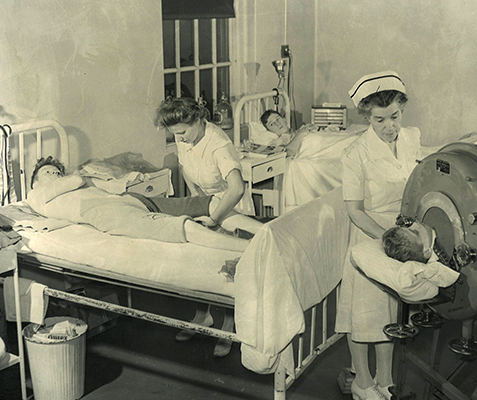
The early history of poliomyelitis suggests that the answer to this question is not nearly as straightforward or unequivocal as the official polio story sold to us by the medical establishment would lead us to believe. According to the paper ‘Do Not Eat Those Apples; They’ve Been on the Grounf!’: Polio Epidemics and Preventive Measures, Sweden 1880s-1940s by Per Axelsson, Swedish pediatrician Karl-Oskar Medin, who made the first scientific examinations of a polio outbreak in 1887, concluded that, while polio was an “infectious” disease, it was not a “contagious” disease:
“Karl-Oskar Medin, a pediatrician at the Karolinska Institutet in Stockholm, made the first scientific examination of an ongoing polio epidemic in 1887. Because Bergenholtz never published his findings from 1881, Medin became famous when he, at an international medical conference in Berlin in 1890, presented polio as an epidemic disease. Medin considered polio to be an acute infectious disease, affecting the nervous system, that could cause epidemics, but he did not consider it to be contagious. This may sound strange for us today, but it is possible to assume that Medin thought of polio as caused by miasmatic conditions.“
Dr. Ivan Wickman, on pages 99-100 of his 1913 book Acute Poliomyelitis, tells us of a Norwegian researcher by the name of Leegaard, who was unable to prove a single case of patient-to-patient contagion in a 1899 polio outbreak of 54 cases in Norway:
“The only noteworthy observation in this respect was Leegaard’s. He proved that the disease showed a remarkable relation to highways. But to him, also, the precise mode of diffusion of the disease remained obscure. The current view was expressed in the sentence: ” Infantile paralysis is of an infectious, but not of a contagious nature.” As a matter of fact no indisputable instance of contagion could be proved.”
https://archive.org/details/acutepoliomyeli02wickgoog/page/n111/mode/1up
A November 1893 article titled Is Acute Poliomyelitis Unusually Prevalent This Season? appeared in an issue of the widely circulated Boston Medical and Surgical Journal. Contrary to what is expected from an “infectious and contagious” disease, most of the polio victims came from the rural areas surrounding Boston, and not from the city itself:
“It is noteworthy, as against any strongly marked epidemic influence, that the patients did not come to any extent, from any one locality, but from different parts of the large area of the suburbs of Boston.”
Dr. Charles Caverly, in the book Infantile Paralysis in Vermont, stated on page 28 that no “infectious” disease had been found that could explain a 1894 outbreak of infantile paralysis, and that he was very certain that it was, in fact, non-contagious as there were no efforts in isolating the children from one another:
“There was a general absence of infectious disease as an etiologic factor in this epidemic. The element of contagium does not enter into the etiology either. I find but a single instance in which more than one member of a family had the disease, and as it usually occurred in families of more than one child, and as no efforts were made at isolation, it is very certain that it was non-contagious.”
In the 1909 edition of The Boston Medical and Surgical Journal, Dr. Herbert Emerson reinforced Dr. Caverly’s views in his report of the 1908 Massachusetts polio epidemic. He stated that, in instances where there was no isolation amongst families with multiple children and numerous instances of close contact between family and friends (totaling at least 244 children with close contact all together), only 2 cases ever developed. He concluded that, due to the insignificant amount of cases, the disease was “mildly contagious” at best:
“EVIDENCE OF NON CONTAGION: Careful inquiry into the conditions that obtained during the illness of the 67 in which there was no isolation shows that there were 166 children in these families, 4 of which later had the disease; that there were 4 instances in which the sick child slept with a brother or sister up to the time of illness, 7 during the first few days of illness and 5 throughout the entire illness; that there were 9 instances in which the other children of the family drank from the same cup; that there were 12 instances in which the children in the family and neighbors’ children kissed the sick child during the acute illness. It is impossible to determine the number of times that contact of the kind just mentioned occurred, but the above detail indicates to how great an extent the intimacy of the well with the sick did occur. Out of the entire number involved to the intimate contact just described, 2 cases developed the disease.”
“Investigation further showed that there were, in addition to the 166 exposed children in the families, 86 children among neighbors and friends (making a total of 244 children) who were in intimate contact with the 67 cases. By intimate contact is meant (and this appeared to be almost universal) as free intercourse of the well and the sick as the patient’s condition would permit. Playing with the child, sitting beside him, taking naps lying on the lounge or bed with him were the conditions that existed in almost every case. The total number of children that were more or less intimately exposed to the 67 cases is probably at least twice or three times the number of known exposures.”
“With regards to the contagiousness of the disease, the investigation of this group of cases suggests that the disease is but mildly contagious to say the most. A large number of children were in intimate contact with those that were sick, and of these children an insignificant minority developed the disease.”
https://archive.org/details/bostonmedicalsur1611mass
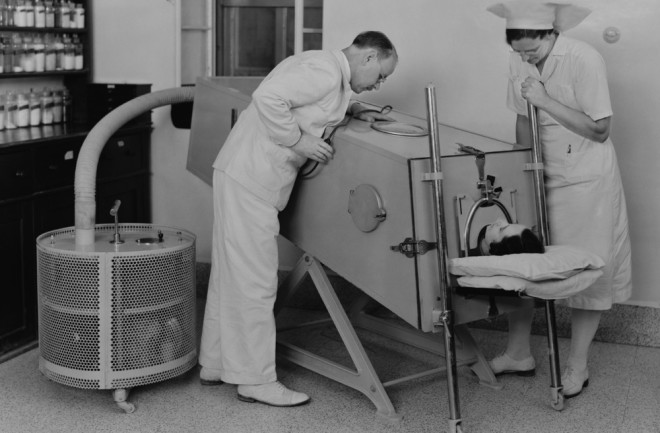
Dr. Fredrik Batten published a paper entitled The Epidemiology of Poliomyelitis in 1911 and described the non-contagious nature of poliomyelitis during an epidemic in 1909. He mentioned that there was an absence of “infection” in the hospital. There was no attempt at disinfection and isolation, and at least 70 children came into contact with sick children with no “infections” taking place. This led him to believe that the paralytic stage of the disease is not contagious, as there was a striking absence of “infection” when contact had been most close:
“Against the infectivity of the disease may be urged, first, the absence of spread of infection in hospital. The cases of poliomyelitis admitted to hospital freely mixed with other cases in the ward without any isolation or disinfection, some 70 children came in contact, but no infection took place. On these grounds it is probable that the paralytic stage of the disease is not contagious. Secondly, the striking absence of infection when contact has been most close. In November, 1909, H. E. was taken ill with poliomyelitis; all five brothers and sisters, although in closest contact, remained unaffected. In October, 1909, M. K., aged 2-, was taken ill; two sisters, aged 6 and 11 respectively, slept with and were in close contact with the child and remained unaffected. Twin sisters, aged 21, one was affected, the other unaffected.”
Another example comes from an article titled The Epidemiology of Acute Poliomyelitis published in 1908 in the American Journal of Medical Sciences by New York physicians Luther Emmet Holt and Frederic Bartlett. Holt and Bartlett reviewed every polio outbreak reported in the medical literature at the time, totaling 35 in all, and paid special attention to reports of multiple morbidity in a single family. Out of the 1,400 polio cases reviewed, only 40 instances of more than one patient in a family were found. On page 662, the physicians concluded that, while they felt that polio was an “infectious” disease, contagiousness was an open question. Holt and Bartlett wanted to claim that polio was contagious. However, they could only say it was contagious to a very slight degree. Even then, the physicians cautioned against drawing any conclusions until an “infectious agent” was discovered:
“Conciusions. The occurrence of epidemics and the relation of certain groups of cases to one another in these epidemics place beyond question the statement that acute poliomyelitis is an infectious disease. Whether we can go farther and state that the disease is communicable is an open question. After carefully considering all the evidence brought together in this paper, we cannot resist the conclusion that the disease is communicable, although only to a very slight degree, one of the most striking facts being the development of the second cases within ten days after possible exposure. Positive statements, however, must be deferred until the discovery of the infectious agent.”
In a lecture at the 1926 conference of the American Medical Association, Dr. Lloyd Aycock of the Department of Preventive Medicine and Hygiene at Harvard Medical School spoke on the epidemiology of polio and its means of distribution. He noted a greater incidence of polio in rural areas, compared to cities, contradicting what would be expected from a contagious disease:
“there is no theoretical reason why persons in rural life should be more prone to exhibit the paralytic form of the disease.”
Dr. Aycock also emphasized the lack of evidence for direct contagion among polio patients:
“However, epidemiologic evidence of direct contact is scant. The proportion of cases ascribed to direct contact, made up largely of multiple cases in families, has been stated at around 5 percent. It has been observed that the onsets of multiple cases in families as a rule so nearly coincide that they probably represent in the majority
of instances simultaneous infection. When allowance is made for this, the proportion of direct contact cases is reduced to an extremely small figure.”
Thus, the early US polio outbreaks did not provide substantial evidence suggesting that it was a contagious disease. Its characterization as an “infectious” disease was also not based on solid evidence but rather on a distribution pattern. Reinforcing the above sources, we can find further evidence showing not only that polio was not a contagious or “infectious” disease, but also that the contagion hypothesis was lacking, the evidence for polio was derived from animal experiments that did not equate to humans, and that contagion did not exist in animals either.
Investigating an outbreak of polio in Louisville in 1935, L. L. Lumsden stated that he was not able to obtain evidence of transmission through personal contact:
“Painstaking efforts were made throughout the studies to obtain all traces of transmission of the disease through personal contact, but it appears that in this outbreak in Louisville evidence of personal association between the cases of poliomyelitis, suggestive of cause and effect, was no more common than that which might have been found if histories had been taken of personal association between cases of broken bones occurring in the city in the same period.”
In 1938, Lumsden expressed further doubts about the contagion hypothesis, stating that it was unknown if polio was “infectious” or contagious. He stated that the evidence pointed to the opposite conclusion. The current hypotheses for spread were not satisfactory, and the proof supporting the contagion hypothesis was lacking:
“We do not know the main source or sources of the infection nor, with certainty, whether the disease is infectious.”
“We do not know definitely the usual mode or modes of spread, the portal or portals of entry into the human body nor whether it is directly or indirectly communicable from person to person.”
“The general and usual epidemiological features of the disease all appear opposed to the hypothesis that poliomyelitis is a contagious disease spread among human beings by nose-to-nose or any other direct personal contact.”
“What is the reason for such regional distribution of the disease we call poliomyelitis? We simply do not know. None of the usual hypotheses of spread—the contagion or other—appear to apply to it to a completely satisfactory degree.”
“The contagion hypothesis may be right, but proof of it is yet lacking.”
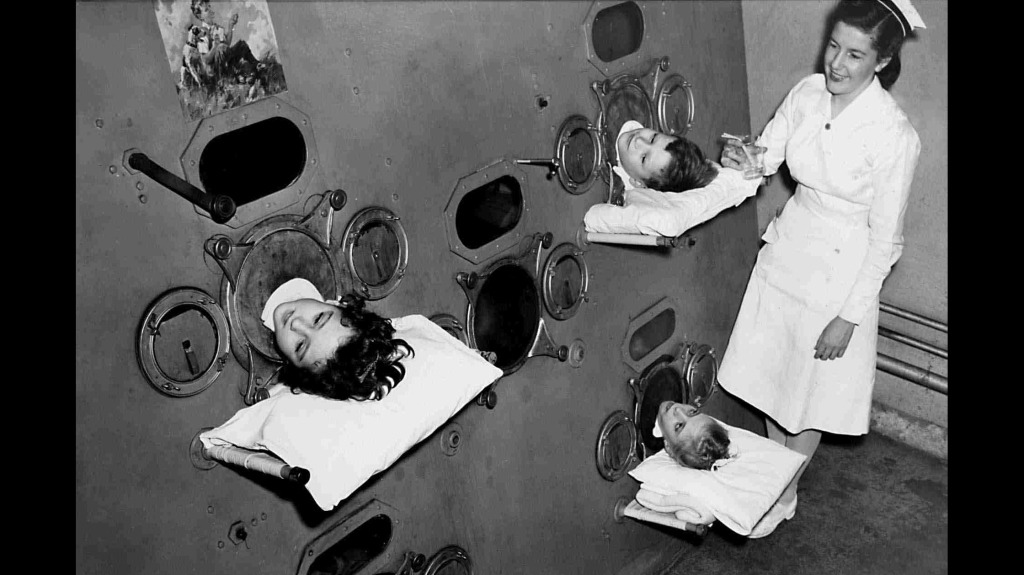
In the 1938 paper Acute Anterior Poliomyelitis, G.O. Barber noted the absence of polio transmission in children who regularly slept next to siblings in the paralytic stage for several days, going so far as to say that polio was definitely not highly “infectious:”
“It is definitely not highly infectious. Until recently, cases were nursed from the start in general wards of general hospitals, and there have been no well-authenticated cases of infection to contacts. Certain of the cases in this recent outbreak occurred in crowded families, and were not reported until the illness had been in the paralytic stage for several days. During this time other children had been sleeping every night in the same bed as the paralyzed child, and in no case was one of these contacts affected later.”
Dr. Archibald Hoyne, a professor of pediatrics at the Chicago Medical School and an attending physician at two Chicago hospitals, began his 1951 article Poliomyelitis Problems with the following statement questioning what exactly had been learned about polio in the past 40 years:
“Notwithstanding the intensive studies of investigators, very little information of practical value has been added to our knowledge of poliomyelitis during the past forty years…One might almost be tempted to make the contradictory statement that the more we learn about poliomyelitis, the less we know.”
He noted that in the 35 years he worked in “infectious” disease wards of Chicago hospitals, no doctor, intern, nurse, staff member, or hospitalized patient was ever “infected” with polio:
“However, in the Cook County Contagious Disease Hospital where the latter procedure has not been used there has never been a doctor, intern, nurse or any other member of the personnel who contracted poliomyelitis within a period of at least thirty-five years, nor has any patient ever developed poliomyelitis after admission to the hospital.”
At the end of his paper, Dr. Hoyne laid out a summary of the problems regarding polio, listing issues such as an unknown etiological agent, the warm weather prevalence being unusual for contagious disease, an undetermined mode of transmission, and questions whether isolation from the “infected” prevented the disease. Funny enough, he put the “new virus” in quotations:
A SUMMARY OF PROBLEMS
- Still unknown etiologic agent.
- Warm weather prevalence, unusual for a communicable disease.
- Undetermined manner of transmission.
- Susceptibility in the exceptionally well nourished.
- Variability of symptoms.
- Lack of a practicable laboratory diagnostic test.
- Diagnostic difficulties added by the “new virus.”
- Reliable measures for prevention.
- Dependable methods for treatment.
- Question whether isolation of poliomyelitis patients is an effective means of controlling the disease.
Writing two years earlier in 1949 in the journal Pediatrics, Edward Shaw and Hulda Thelander of the San Francisco Children’s Hospital noted that there had been no solid information regarding polio’s epidemiology, transmission, precise pathogenesis, or the details of diagnosis and treatment. They stated that there was a tendency to depart from the theory that the disease spreads by means of direct contact:
“Every aspect of poliomyelitis has been subjected to intensive study during the last two or three decades, in spite of which the clinician has not been presented with any inescapably sound doctrine regarding its epidemiology and transmission, its precise pathogenesis, or the details of diagnosis and treatment…The epidemiology of the disease remains obscure. There has been a tendency to depart from an early theory that the disease spreads by means of direct contact.”
In the 1948 book Virus Diseases in Man, Van Rooyen and Rhodes made the significant remark that our “knowledge” on polio was derived from experimentation with monkeys rather than based upon observable facts from humans:
“It must be admitted that our present views of the pathogenesis of human poliomyelitis result very largely from recent experimental work carried out on monkeys, rather than on facts observed from the patient himself.”
In the 1918 3rd edition of Preventative Medicine and Hygiene, Milton Rosenau, professor of preventive medicine and hygiene at Harvard, and author of the infamous Spanish flu experiments conducted at the height of the most deadly “virus” of all time that disproved its contagious nature, made a startling revelation. He stated that the only reliable way to create experimental polio was through paralyzing monkeys in the lab via injections directly into the central nervous system, preferably in the brain (as seen by the experiments of Landsteiner and Popper as well as those performed by Simon Flexnor). However, even after becoming paralyzed, the monkeys were not contagious. Rosenau noted on page 306 that monkeys do not develop polio spontaneously, even when kept in “intimate” contact with one another:
“Monkeys have so far never been known to contract the disease spontaneously, even though they are kept in intimate association with infected monkeys.”
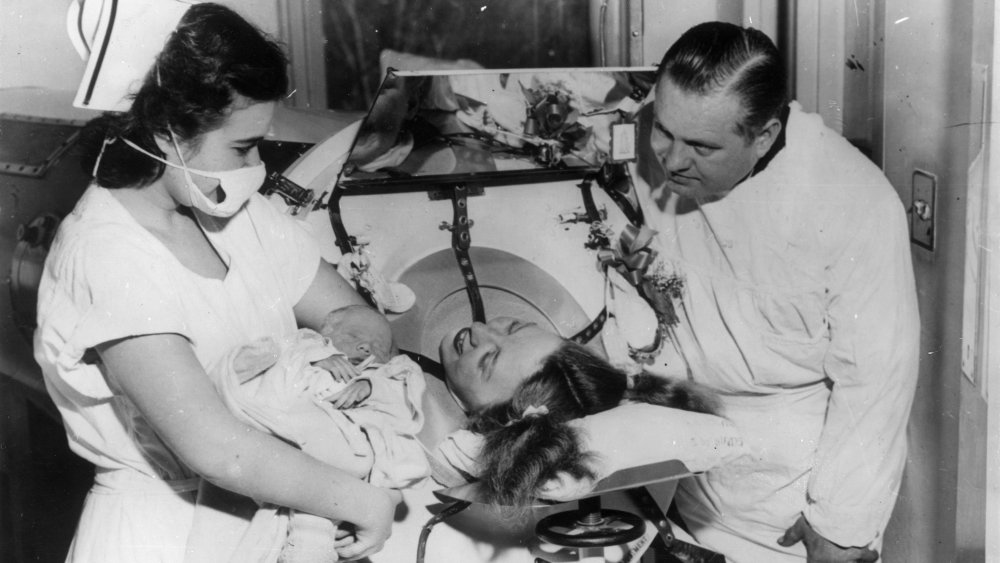
John Toomey, a veteran polio researcher, reinforced Rosenau’s observation in his article Poliomyelitis published in The Journal of Pediatrics in 1941. He noted that the experimental mode of transmission in animals did not necessarily equate to humans and that monkeys were not contagious to other monkeys no matter how intimately exposed they were:
“All of these conclusions have been confirmed many times, but they merely prove that it is easy to produce poliomyelitis in the experimental animal in this way; such facts do not constitute even prima facie evidence that virus enters the human being by way of this portal. The natural disease never acts like an upper respiratory infection in the experimental animal for no animal gets the disease from another, no matter how intimately exposed.”
In his 1951 paper Is the public health law responsible for the poliomyelitis mystery?, Dr. Ralph R. Scobey, professor of clinical pediatrics and president of the Poliomyelitis Research Institute Syracuse, questioned the contagious nature of polio. He asked whether polio was actually an “infectious” contagious disease and noted that the assumption that it was such a disease was based almost entirely upon animal experiments rather than clinical investigations. He pointed out that polio was never thought of as a contagious disease, especially as nurses and mothers caring for the affected children never came down with the disease. There was also no evidence of any polio cases originating in the hospitals, even in wards with children suffering from the disease. Simon Flexner also admitted that the evidence for contagiousness was unconvincing, while L. Emmett Holt stated that even considering polio as contagious was seen as a joke. Even though polio eventually came to be considered contagious, Dr. Scobey pointed out that every attempt had failed conclusively to prove this as being the case:
“The first, and by all means the foremost fact that must be conclusively established is whether or not poliomyelitis is actually an infectious contagious disease, as has been commonly assumed and stated in the public health law. This assumption, it must be admitted, is almost entirely based on the results of animal experiments rather than on clinical investigations.”
“At the time that a Report of the Special Committee on Anterior Poliomyelitis was read to the members of the American Orthopedic Association and the American Pediatric Society, April 28, 1911 the following comments were made regarding the prevalence of the disease and its communicability in previous years. Chapin stated: ‘There is one aspect of this disease of considerable interest. Years ago we never thought of contagiousness with reference to it.’ Acker stated that he had seen no cases of contagion. ‘If the disease is so contagious,’ he said, ‘I do not understand why the nurses and mothers would not have been infected.’
“Adams asked a certain number of questions, among which was: ‘Have you ever had a case of poliomyelitis originate in the hospital, or have you any evidence that the disease has spread from patients admitted to the hospital?’ As to the disease originating in the hospital, the invariable reply, he says, was, ‘No.’ ”
“Sachs states that children afflicted with the disease were kept in general hospital wards and that not a single one of the other inmates of the wards of the hospital was affected with the disease. Simon Flexner (1910) stated: ‘It was not easy to establish in an individual case precisely how the disease was acquired; it was difficult to bring evidence that was at all convincing that this disease was contagious.’ L. Emmett Holt, in discussing Flexner’s paper, stated: ‘Even five years ago if anyone had suggested that the disease under discussion was an infectious or a contagious one, it would have been looked upon as a joke.’“
“Although poliomyelitis is legally a contagious disease, which implies that it is caused by a germ or virus, every attempt has failed conclusively to prove this mandatory requirement of the public health law. The manifest truth that we must take into consideration is that progress in poliomyelitis investigations has been impeded by this prematurely formulated public health law.”
https://archive.org/details/sim_archives-of-pediatrics_1952-04_69_4/page/188/mode/2up
Further doubts were expressed in Dr. Scobey’s 1952 article The poison cause of poliomyelitis and obstructions to its investigation. He pointed out once again that conclusive evidence of contagiousness was not established during any polio epidemics, including in 1949, during one of the greatest epidemics of poliomyelitis in recorded history. Dr. Scobey noted that it had proven impossible not only to show polio contagiousness in humans but in animals as well:
“The fact that an extensive epidemic of poliomyelitis was prevailing in the states of New York and Massachusetts in 1907, aroused the suspicion that the disease was infectious and communicable; it was therefore incorporated into the Public Health Law as such. However, conclusive evidence of contagiousness was not established during that epidemic nor in subsequent ones. Moreover, conclusive evidence of contagiousness was not established in 1949, during the greatest epidemic of poliomyelitis in recorded history, as shown by the records of the U. S. Public Health Service and the New York State Department of Health. Time Magazine, commenting on these surveys, points out how, when and where people catch polio remained a mystery. In addition to the failure to prove contagiousness of human poliomyelitis, it has likewise been impossible to prove contagiousness of poliomyelitis in experimental animals.”
https://archive.org/details/sim_archives-of-pediatrics_1951-05_68_5/page/220/mode/2up
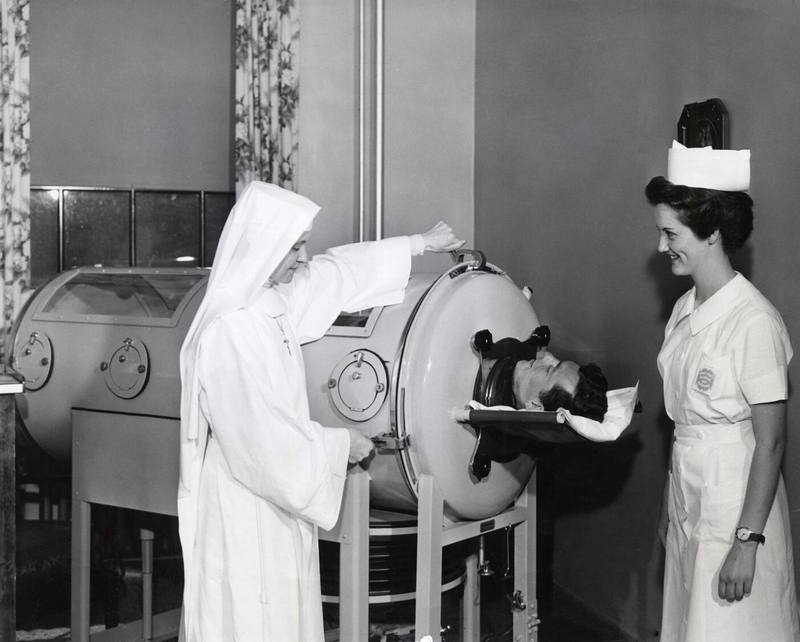
In Summary
- Karl-Oskar Medin, a pediatrician at the Karolinska Institute in Stockholm who made the first scientific examination of an ongoing polio epidemic in 1887, considered polio to be an acute “infectious” disease, affecting the nervous system, that could cause epidemics, but he did not consider it to be contagious
- In 1899, Norwegian researcher Leegard stated that infantile paralysis is of an “infectious,” but not of a contagious nature, and that no indisputable instance of contagion could be proven
- An 1893 article stated that it was noteworthy, as against any strongly marked epidemic influence, that patients came from different parts of the large area of the suburbs of Boston rather than the city
- In 1894, Dr. Charles Caverly stated that there was a general absence of “infectious” disease as an etiologic factor in the epidemic and that the element of contagium did not enter into the etiology as no efforts were made at isolation
- In 1909, Dr. Herbert Emerson reinforced Dr. Caverly’s views in his report of the 1908 Massachusetts polio epidemic where, in instances with no isolation amongst families with multiple children, as well as numerous instances of close contact between family and friends (totaling at least 244 children with close contact all together), only 2 cases developed, leading to the conclusion that, due to the insignificant amount of cases that developed, the disease was “mildly contagious” at best
- Dr. Fredrik Batten described the non-contagious nature of poliomyelitis during an epidemic in 1909, mentioning that there was an absence of infection in the hospital, there was no attempt at disinfection and isolation, and at least 70 children came into contact with sick children with no “infections” taking place, leading him to believe that the paralytic stage of the disease is not contagious
- In 1908, Luther Emmet Holt and Frederic Bartlett reviewed every polio outbreak reported in the medical literature at the time, totaling 35 in all, and paid special attention to reports of multiple morbidity in a single family, finding only 40 instances out of the 1,400 polio cases, which lead the physicians to concluded that, while they felt that polio was an “infectious” disease, contagiousness was an open question, and if it was, it was only to a very slight degree
- In a lecture at the 1926 conference of the American Medical Association, Dr. Lloyd Aycock stated that there was no theoretical reason why persons in rural life should be more prone to exhibit the paralytic form of the disease, which went against contagious disease spread
- In 1938, G.O. Barber stated that polio is definitely not highly “infectious” as children in crowded homes had been sleeping every night in the same bed as the paralyzed child, and in no case was one of them “infected”
- In 1951, Dr. Aycock also pointed out that the epidemiologic evidence of direct contact is scant, estimated at around 5 percent, showing that the proportion of direct contact cases is reduced to an extremely small figure
- Investigating an outbreak of polio in Louisville in 1935, L. L. Lumsden stated that he was not able to obtain evidence of transmission through personal contact
- In 1951, Dr. Archibald Hoyne questioned what exactly had been learned about polio in the past 40 years, noting that in the 35 years he worked in “infectious” disease wards of Chicago hospitals, no doctor, intern, nurse, staff member, or hospitalized patient was ever “infected” with polio
- Dr. Hoyne also listed several issues such as an unknown etiological agent, the warm weather prevalence being unusual for contagious disease, an undetermined mode of transmission, and questions whether isolation prevented the disease
- In 1949, Edward Shaw and Hulda Thelander noted that there had been no solid information regarding polio’s epidemiology, transmission, precise pathogenesis, or the details of diagnosis and treatment while stating that there was a departure from the theory that the disease spreads by means of direct contact
- A year earleir in 1948, Van Rooyen and Rhodes made the significant remark that our “knowledge” on polio was derived from experimentation with monkeys rather than based upon observable facts from humans
- In 1918, Milton Rosenau, professor of preventive medicine and hygiene at Harvard, stated that the only reliable way to create experimental polio was through paralyzing monkeys in the lab via injections directly into the central nervous system, preferably in the brain
- However, Rosenau noted that even after becoming paralyzed, the monkeys were not contagious and that monkeys do not develop polio spontaneously, even when kept in “intimate” contact with one another
- In a 1941 paper, John Toomey, a veteran polio researcher, reinforced Rosenau’s observation, noting that the experimental mode of transmission in animals did not necessarily equate to humans and that monkeys were not contagious to other monkeys no matter how intimately exposed they were
- In 1951, Dr. Ralph R. Scobey, professor of clinical pediatrics and president of the Poliomyelitis Research Institute Syracuse, questioned the contagious nature of polio, asking whether polio was actually an “infectious” contagious disease while noting that the assumption that it was such a disease was based almost entirely upon animal experiments rather than clinical investigations
- He pointed out that polio was never thought of as a contagious disease, especially as nurses and mothers caring for the affected children never came down with the disease, nor was there any evidence of any polio cases originating in the hospitals, even in wards with children suffering from the disease
- He pointed out that Simon Flexner admitted that the evidence for contagiousness was unconvincing, while L. Emmett Holt stated that even considering polio as contagious was seen as a joke
- While polio is considered contagious, Dr. Scobey pointed out that every attempt had failed conclusively to prove this as being the case
- In 1952, Dr. Scobey stated that conclusive evidence of contagiousness was not established during any polio epidemics, including in 1949 during the greatest epidemic of poliomyelitis in recorded history
- Dr. Scobey noted that it had proven impossible not only to show polio contagiousness in humans but in animals as well
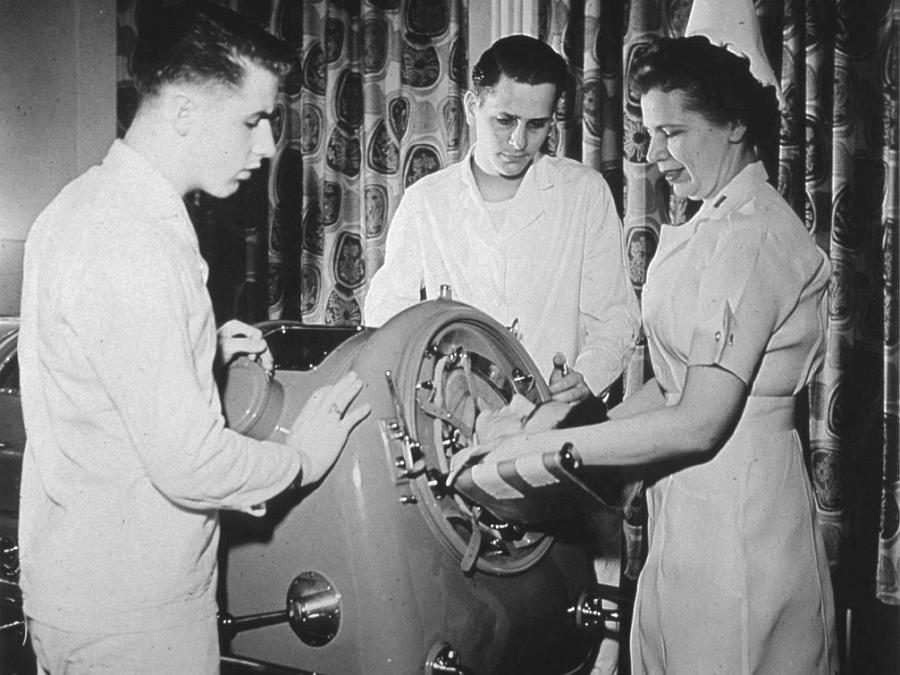
“…there is no evidence for the transmission of poliomyelitis by droplet nuclei…”
https://pubmed.ncbi.nlm.nih.gov/14889394/
– Albert Sabin 1951, inventor of the polio vaccine.
We have healthy children sleeping for days next to their paralytic siblings without protection or “infection.” We have exposed friends and family members that resulted in no “infections.” We have doctors, nurses, patients, and other medical personnel who were never once “infected” by those residing in the polio wards (perhaps it makes sense now why there are so many images of medical staff unconcerned with protective gear when caring for polio patients). We have cruel animal experiments that did not lead to “infections” in any of the animals that were in direct contact with the experimentally diseased. The numerous examples uncovered by Aldhissla45 of various doctors, researchers, and scientists admitting to the lack of evidence supporting the contagious nature of the polio disease is extremely compelling evidence against the mainstream narrative. While there was some disagreement as to whether polio was “infectious,” it is very clear that there was widespread acceptance that polio was not a disease that could be transmitted and spread from person-to-person or even from animal-to-animal. When you also factor in:
- The fact that no polio “virus” was ever properly purified and isolated directly from the fluids of a sick human or animal and proven pathogenic via a natural route of exposure in adherence to the scientific method
- The animal experiments “proving” polio consisted of injecting toxic unpurified soups into the brains of animals in order to create paralysis that could not be transmitted via contact with other animals
- The dangers associated with both the Salk and Sabin vaccines in causing the exact same disease that they were supposed to prevent
- The reclassification of what a polio case was when the vaccines were rolled out in order to create the appearance that polio was conquered
- The evidence that DDT and lead arsenate use at the time polio was prevalent was associated with the exact same symptoms of disease attributed to polio
It should be enough to make anyone stop and reconsider the official narrative that has been presented to and accepted by the public at large. The symptoms of disease known as polio still exist today under various other names. The only difference between them is the assumed cause. However, it is very clear that an “infectious” cause was never proven, and the ability for the disease to transmit from one human to another is a fictional tale used to support a toxic vaccine campaign and to cover up the crimes of poisoning by the agricultural industry. With so many examples of the inability to spread polio via animal experiments and even amongst heavily exposed family members, it is safe to say that the medical establishments claims that polio is highly contagious are unwarranted and outright fraudulent. In other words, the myth that polio is a “highly infectious and contagious” disease has been thoroughly busted.
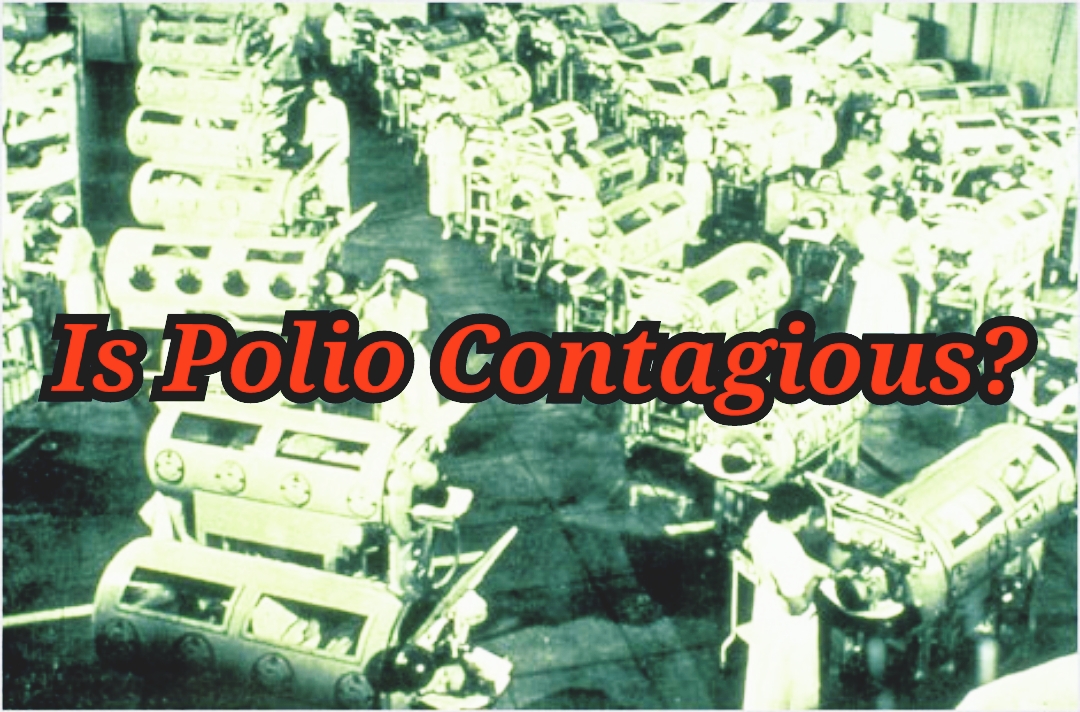
Great Work! You are doing such impressive work still, and still getting better! It’s just wonderful to see and your commitment is so inspiring. One of these days I will get a paid sub, it’s on my list! Have you considered yet adding an article on leprosy to your Infectious Myth series?
LikeLiked by 1 person
Thank you so much for the kind words and support, Kensho! I greatly appreciate it. 🙂
LikeLiked by 1 person
Excellent article, Mike, thanks!!
LikeLiked by 1 person
You are very welcome, Jeffrey. I have to give much of the credit to Aldhissla45. Really great research. 🙂
LikeLike
Well, thanks very much as well, Aldhissla45, pleased to meet you.
LikeLiked by 1 person
You likely won’t like this but I have to ask: what exactly is The Goal here? If these policies are harmful, one would think that ending the harms, ergo ending the policies causing those harms would be The Goal. If so, where is it? Step 1, Inform the Public.
What’s Step 2? How does an informed public merely being informed and anything? We Are Informed that Russia is attacking Ukraine. Does the attack end because we’re informed? No. So it’s not the LAST step in the process.
Yet neither here, at Dr. Bailey, at Del Bigtree is even a Second Step discussed? Will the policies become benign after people become informed? Obviously not because we already were all informed & the policies continue.
Am I missing something? If we don’t stop the policies today, tomorrow, children will die or be harmed by them, right? That’s even Your Own Story. So where are you all gathering together to discuss how to stop that because I want to be part of the effort.
LikeLike
Hi Michael,
There have been those who have attempted to enact changes through the court, but sadly, the cases have been thrown out. The legal system is corrupt and against us. Unfortunately, it seems that the best course of action is to wake as many people up to the fraud as possible so that we can gain a critical mass that can not be ignored. If enough people demand change, there is nothing that they can do to stop it.
LikeLike